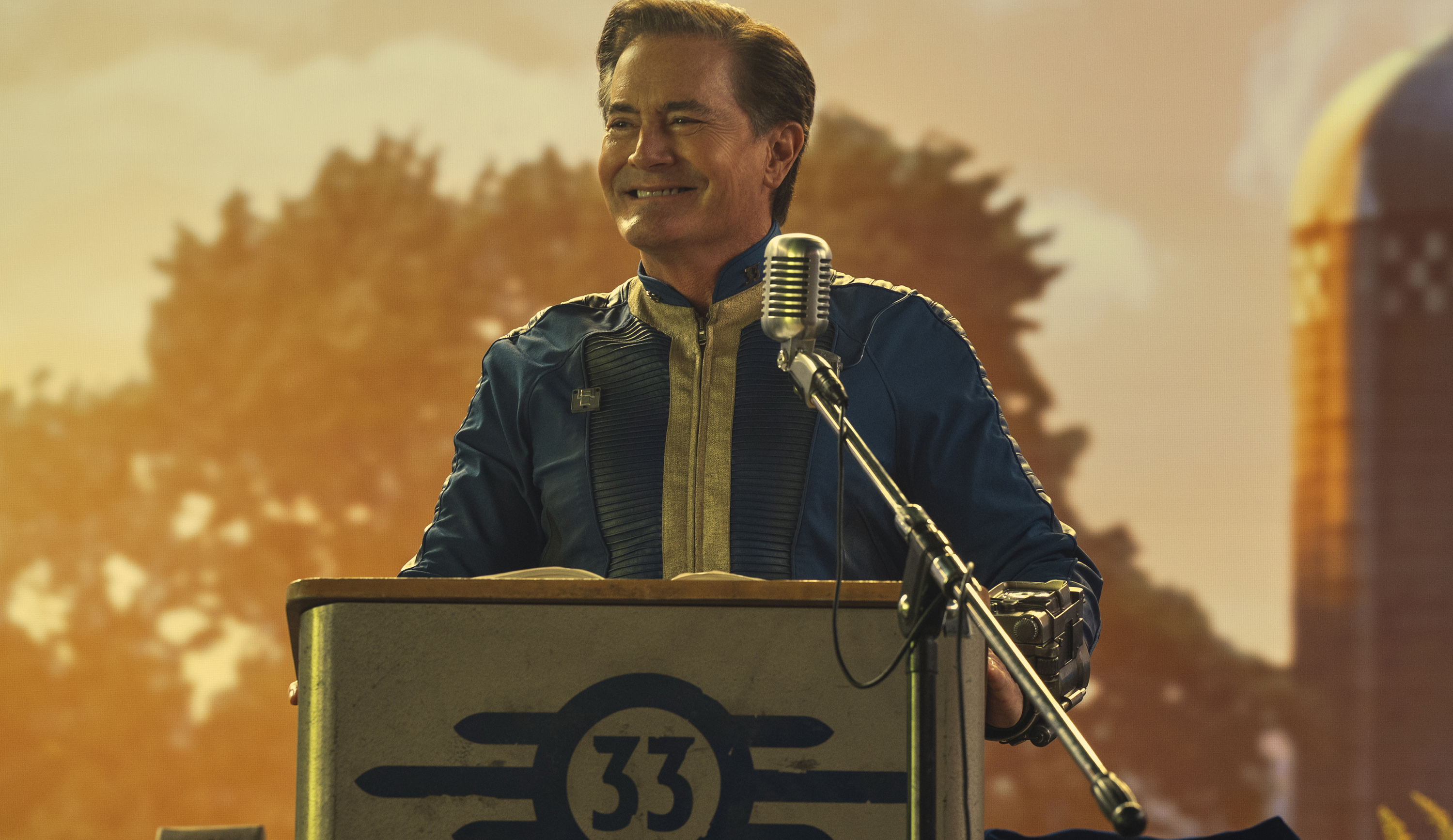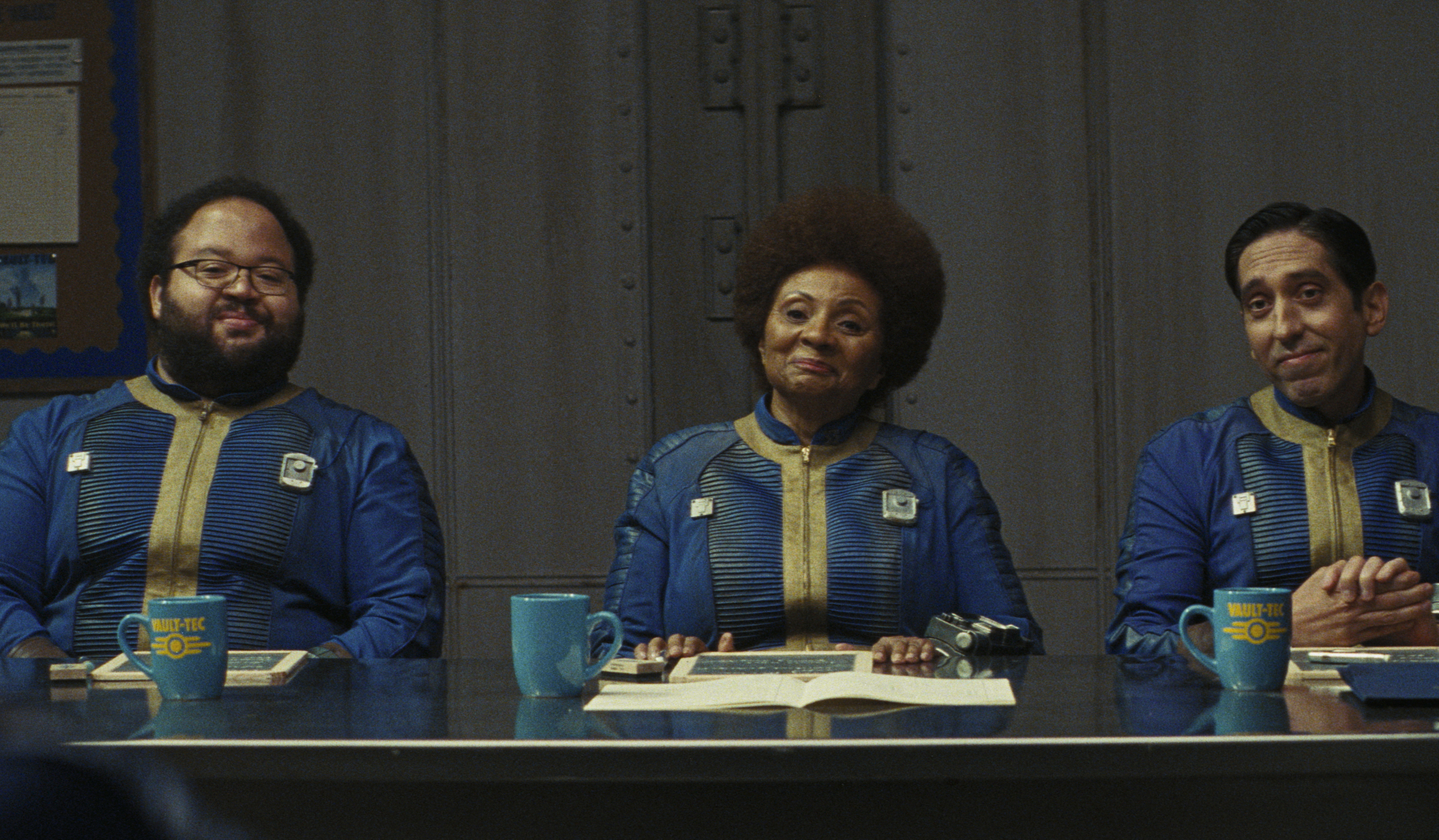How do the Fallout show's Vault suits look so good? Niche Italian fabric, it turns out
Cosplayers take note: You might have to up your fabric game to look as good as Ella Purnell or Kyle MacLachlan.

I've never seen anyone look as good in a Vault suit as the actors in the Fallout show. The licensed Vault-Tec jumpsuits you can get from costume stores are spandex disasters, but even more expensive Vault suits aimed at cosplayers look a bit pajama-like. The show's jumpsuits, however, are form-fitting without being superhero-tight, and don't seem to limit movement whatsoever—they look comfy, but also cool, or at least as cool as a blue and yellow jumpsuit that designates you as a sheltered nerd can look.
Well, there's a reason. Vault 33's main sartorial advantage was of course having a team of expert costumers on hand to custom make their outfits, but those retro sci-fi tailors also had a secret weapon: hard-to-get Italian fabric.
In the games, Vault suits do sometimes cling to muscles, but Fallout show costume designer Amy Westcott, whose other credits include Black Swan, Nightcrawler, and The Wrestler, wanted to avoid "shiny, spandex, sort of superheroes stuff."
"We were dealing with real people with real bodies," Westcott said in a recent interview with PC Gamer. "So it was a lot about what could look universally flattering in a way that wasn't skin tight, you know, and wouldn't make everybody feel terrible and self conscious, but had a cool [look]. It's almost like we followed a bit of an aviation suit, you know, where you zip it up and use that. So it was tight, but it wasn't within an inch of its life kind of tight."
To achieve the fit, Westcott sought out a "matte fabric that had a four way stretch." After making multiple prototype vault suits with different fabrics, Fallout's costume department landed on a niche Italian product from a company called Mectex, which Westcott also relied on for 2013 sci-fi movie After Earth. Importing small batch fabric from Italy added complications to the department's task, but Mectex made "hands down" the best fabric for the job, said Westcott.
I suggested that cosplayers might be disappointed to know that looking as good as a citizen of Vault 33 requires sending a custom fabric order to northern Italy—and then hand-dying that fabric to match Fallout's particular blue—but Westcott suggested that hobbyists might not have to go that far to get a good result if they don't plan to shoot a TV show in the outfit.
"I think if you're not wearing it for 12 to 15 hours, [another four-way stretch fabric] could go back to its shape," said Westcott. "But when you're wearing it for that long, it can really take a beating because you stretch it when you're moving, and then a lot of things bag. So after hours of working with it—the big challenge was finding the fabric that would go back to its initial shape."
Keep up to date with the most important stories and the best deals, as picked by the PC Gamer team.




One of the Fallout show's more impressive feats is how it reproduces so much fundamentally goofy retro sci-fi stuff from the games in a way that manages to be both faithful and plausible-looking—or, at least, cooler-looking than you'd expect. The Italian-fabric Vault suits are one example, and last week, Fallout production designer Howard Cummings told me all about another: the wearable suits of power armor fabricated for the show.

Tyler grew up in Silicon Valley during the '80s and '90s, playing games like Zork and Arkanoid on early PCs. He was later captivated by Myst, SimCity, Civilization, Command & Conquer, all the shooters they call "boomer shooters" now, and PS1 classic Bushido Blade (that's right: he had Bleem!). Tyler joined PC Gamer in 2011, and today he's focused on the site's news coverage. His hobbies include amateur boxing and adding to his 1,200-plus hours in Rocket League.

